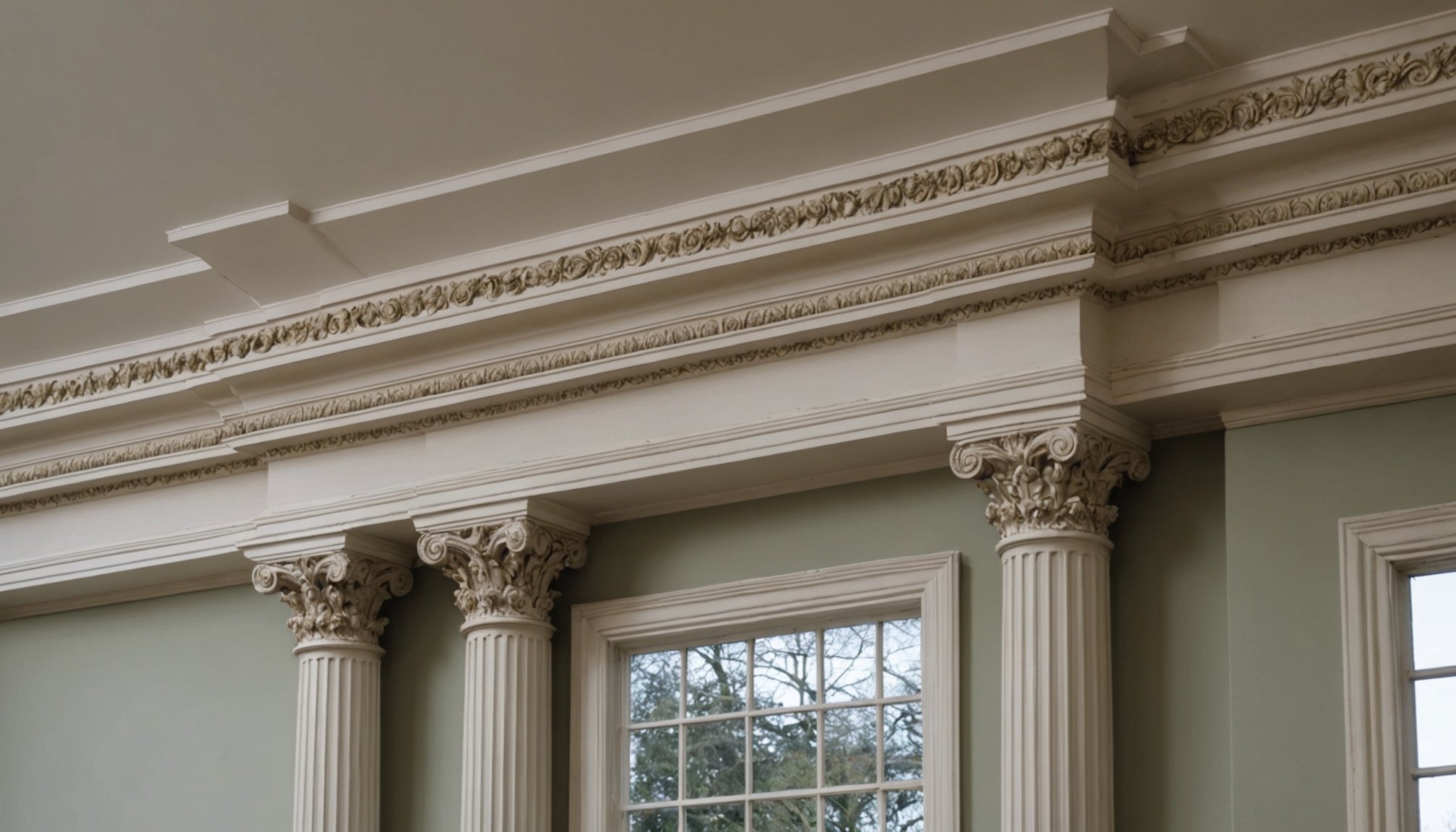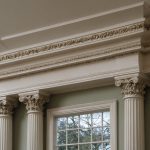Victorian-era cornices are more than just decorative features; they embody a rich history and craftsmanship that can dramatically enhance your home's aesthetic. Restoring these architectural treasures not only preserves their beauty but also adds value to your property. This step-by-step guide will empower you to breathe new life into your cornices, bridging the past with the present while maintaining the integrity of your UK home. Explore practical tips and techniques to achieve stunning results effortlessly.
Understanding Victorian Era Cornices
Victorian architecture, a hallmark of the 19th century, is renowned for its ornate detailing and eclectic style. This era's architecture carries rich historical significance, reflecting the societal values and technological advancements of the time. Among its many features, the cornice stands out as a prominent element, serving both aesthetic and functional purposes.
A découvrir également : Creating a Vibrant Vegetable Garden in Your Cozy Sunderland Front Yard: Tips for Small Space Integration
Victorian cornices are characterized by their intricate design elements, often featuring elaborate mouldings and decorative motifs. These designs were not merely for show; they played a crucial role in the overall architectural harmony of Victorian buildings. The cornices often included floral patterns, dentils, and brackets, contributing to the grandeur and elegance typical of the period.
During the Victorian era, cornice styles evolved significantly. Early Victorian cornices were more restrained, while later styles embraced increased complexity and ornamentation. This evolution mirrored broader architectural trends, as well as advancements in materials and construction techniques. Understanding these historical contexts is essential for anyone involved in cornice restoration today. By appreciating the historical context and craftsmanship, restorers can maintain the integrity and beauty of these architectural treasures, ensuring they continue to grace our buildings for generations to come.
Avez-vous vu cela : What is the most efficient method of water heating in a UK household?
Tools and Materials Needed for Restoration
Restoring Victorian cornices requires a keen eye for detail and the right restoration tools. Essential tools include moulding scrapers, chisels, and paintbrushes for intricate detailing. These tools allow for precision in removing old paint and restoring the cornice's original design. A heat gun can be useful for stripping layers of paint without damaging the underlying material.
When it comes to materials for cornices, authenticity is paramount. Using traditional materials such as plaster or wood ensures that the restoration maintains the original aesthetic. Plaster, in particular, is favoured for its versatility and ease of use in replicating intricate designs. For those interested in DIY restoration, sourcing quality materials is crucial. Specialist suppliers often provide high-grade plaster and wood, essential for a successful project.
Finding reliable sources for these materials can be a challenge. Local architectural salvage yards or online retailers specialising in historical restoration supplies are excellent places to start. These sources often provide a range of products specifically designed for authentic restoration, ensuring your project respects the historical integrity of Victorian architecture.
Step-by-Step Restoration Process
Restoring Victorian cornices requires a methodical approach to ensure both aesthetic and structural integrity. The restoration techniques employed are crucial for preserving the historical essence of these architectural elements.
Preparation and Assessment
Before beginning any cornice repair process, a thorough assessment of the existing cornices is essential. This involves evaluating the extent of damage and determining whether the cornice needs repair or replacement. Identifying the original materials used is also important for maintaining authenticity in the restoration process.
Cleaning and Repairing
Cleaning is a critical step in the restoration process. Gentle cleaning techniques, such as using soft brushes and mild cleaners, help maintain the original details without causing damage. Once cleaned, the focus shifts to repairing any cracks or missing sections. Using traditional materials, like plaster, ensures that the repairs blend seamlessly with the original design.
Installation Techniques
When installing repaired or new sections, precision is key. Aligning the cornice correctly with the building's architecture maintains the aesthetic harmony. For those undertaking a DIY guide, following a step-by-step approach ensures a successful outcome. This includes measuring accurately, using appropriate adhesives, and securing the cornice firmly in place.
Common Pitfalls and How to Avoid Them
Restoring Victorian cornices is a meticulous task, and avoiding restoration mistakes is crucial to preserving their historical value. One common issue is neglecting to assess the cornice thoroughly before beginning work, leading to inappropriate repairs. A detailed evaluation ensures that the right restoration techniques are applied, respecting the original design.
Another pitfall is using modern materials that clash with the period's aesthetic. Opt for traditional materials like plaster to maintain authenticity. This choice not only enhances the visual appeal but also ensures the structural integrity of the cornice.
DIY tips are invaluable for enthusiasts aiming to restore cornices themselves. Patience is essential; rushing can lead to errors and damage. Precision in every step, from cleaning to installation, prevents misalignments and aesthetic discrepancies. Use gentle cleaning methods to protect delicate details and always test adhesives and paints on small sections first.
By understanding these common issues and employing careful techniques, restorers can achieve a faithful restoration. This approach not only honours the craftsmanship of the Victorian era but also ensures these architectural treasures endure for future generations.
Maintenance Tips for Preserving Restored Cornices
Ensuring the longevity of restored Victorian cornices requires consistent cornice maintenance. Implementing effective preservation techniques is crucial to keeping these architectural elements in pristine condition.
Routine Maintenance Practices
Regular inspections are essential for identifying early signs of wear. Look for cracks, peeling paint, or any structural issues that may compromise the cornice. Addressing these promptly prevents further deterioration. Additionally, maintaining a stable indoor environment helps prevent damage caused by humidity fluctuations.
Cleaning Products and Methods
Gentle cleaning is vital to preserve the intricate details of cornices. Use soft brushes and mild, non-abrasive cleaners to remove dust and grime without damaging the surface. Avoid harsh chemicals that can erode the material. For stubborn dirt, a mixture of water and mild detergent is often effective. Always test any new product on a small, inconspicuous area first.
Signs of Wear to Watch For
Post-restoration, be vigilant for signs of wear such as discoloration, loose sections, or mould growth. These issues can indicate underlying problems requiring professional attention. Regular monitoring and timely intervention are key to extending the life of your cornices, ensuring they remain a testament to Victorian craftsmanship for years to come.
Cost Considerations for Restoration Projects
Restoring Victorian cornices can be a rewarding endeavour, but understanding restoration costs is vital for effective financial planning. The average cost of restoring these intricate features varies widely, typically ranging from £500 to £2,500 per cornice, depending on the extent of the damage and the intricacy of the design.
Factors Influencing Costs
Several factors can influence the overall cost of a restoration project. The size and complexity of the cornice, the materials required, and the need for specialised tools can all impact expenses. Additionally, the condition of the existing cornice plays a significant role; extensive damage may necessitate more intensive labour and materials, increasing costs.
Budgeting Tips for Homeowners
When budgeting for restoration, homeowners should consider obtaining multiple quotes from professional restorers to ensure competitive pricing. It's also advisable to set aside a contingency fund for unexpected expenses that may arise during the project. Prioritising essential repairs over cosmetic enhancements can help manage costs effectively. By carefully planning and considering these factors, homeowners can achieve a successful restoration without financial strain, preserving the historical beauty of their Victorian cornices.
Inspirational Case Studies and Examples
Exploring restoration examples can provide valuable insights for those embarking on Victorian cornice restoration projects. In the UK, numerous successful projects have demonstrated the potential to revive architectural splendour.
One notable case study involved a Victorian townhouse in Bath, where the cornices had suffered from decades of neglect. The restoration team meticulously cleaned and repaired the intricate designs, using traditional plaster techniques. The before and after examples were striking, showcasing a transformation from dull and damaged to vibrant and detailed.
Another inspiring project took place in a historic London building. Here, the restorers faced the challenge of matching new materials with the original 19th-century plaster. Through careful research and skilled craftsmanship, they achieved a seamless integration, preserving the building's historical integrity.
Lessons learned from these case studies highlight the importance of patience, precision, and an appreciation for historical authenticity. Successful restorations often rely on a deep understanding of the original design and materials, coupled with modern techniques that respect the past. These examples serve as a testament to the enduring beauty and significance of Victorian cornices.











